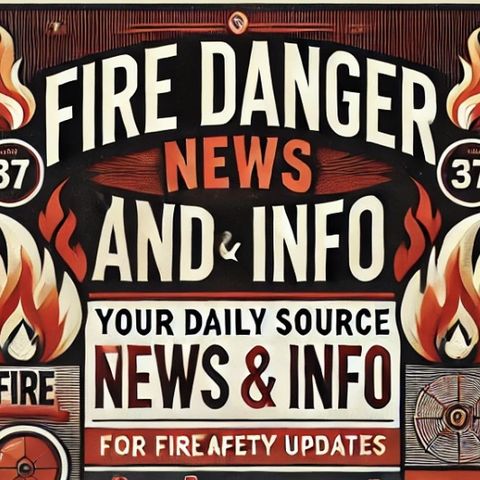Unraveling the Science Behind Wildfires: USGS Leads the Charge in Combating Devastating Blazes

Descarga y escucha en cualquier lugar
Descarga tus episodios favoritos y disfrútalos, ¡dondequiera que estés! Regístrate o inicia sesión ahora para acceder a la escucha sin conexión.
Unraveling the Science Behind Wildfires: USGS Leads the Charge in Combating Devastating Blazes
Esta transcripción es generada automáticamente. Ten en cuenta que no se garantiza una precisión absoluta.
Descripción
Wildfires have long been a natural part of the landscape in the western United States, but their frequency and intensity have increased dramatically in recent years. This surge poses severe...
mostra másAt the forefront of this effort is the United States Geological Survey (USGS), whose Wildland Fire Science program plays a pivotal role in understanding and combating wildfires. This program employs a multidisciplinary approach, combining ecology, geology, hydrology, and remote sensing to address the complex dynamics of wildland fires.
One primary area of focus for USGS scientists is improving predictive models of wildfire behavior. These models are crucial for fire management teams to make informed decisions about deploying resources and implementing evacuation plans. By examining factors such as wind patterns, vegetation types, and moisture levels, researchers can enhance the accuracy of these models. This improved predictability is essential for reducing the risk to human life and minimizing economic losses.
Moreover, the USGS Wildland Fire Science program investigates the long-term ecological impacts of wildfires. Understanding how fires affect soil health, water resources, and biodiversity helps land managers develop strategies that promote ecosystem resilience. For instance, some plant species have evolved to thrive after fires, and recognizing these relationships allows for better land restoration initiatives.
Another vital component of USGS fire science is the use of satellite technology and remote sensing to monitor fires in real-time. These tools provide invaluable data on fire extents, smoke dispersion, and burn severity, all of which are crucial for effective response and recovery efforts. The information gathered also supports efforts to understand how climate change influences fire patterns, enabling more proactive adaptation measures.
The USGS emphasizes collaboration with other federal and state agencies, as well as local communities, to ensure that its scientific findings are effectively translated into action. This collaborative approach enhances wildfire readiness and response across various jurisdictions, promoting a unified effort in managing these complex natural disasters.
Public awareness and education are also significant components of the USGS’s mission. By making scientific data accessible, the USGS empowers communities to understand fire risks and take preventive measures. Educational outreach initiatives aim to inform residents about building regulations, fire-resistant landscaping, and evacuation planning, all vital for reducing vulnerability to wildfires.
The increased frequency and intensity of wildfires underscore the urgent need for comprehensive fire management strategies. Fire science, supported by institutions like the USGS, provides the foundation for these strategies, combining cutting-edge research and technology with practical applications on the ground. Through continued innovation and collaboration, fire science holds the key to safeguarding people and landscapes in an era of unprecedented wildfire challenges.
Visit the USGS Wildland Fire Science webpage to learn how USGS science is making a difference.
Información
| Autor | QP-4 |
| Organización | William Corbin |
| Página web | - |
| Etiquetas |
Copyright 2024 - Spreaker Inc. an iHeartMedia Company
